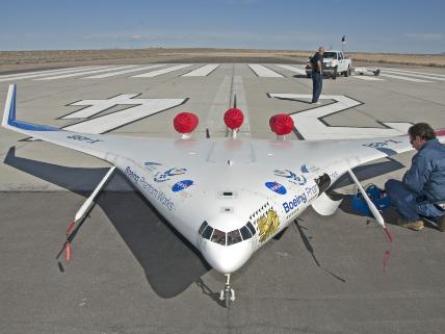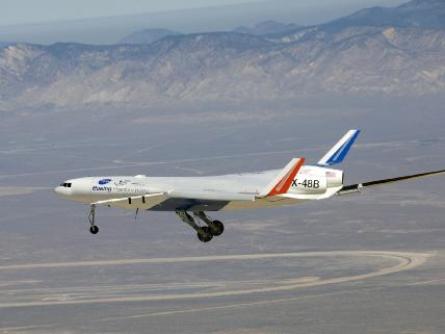NASA and Boeing have completed the first phase of flight testing on the agency's X-48B blended wing body aircraft concept, accumulating 80 test flights on the 227kg (500lb), one-eighth scale model designed to be a quieter, more fuel efficient successor to today's passenger and cargo aircraft.
Starting with first flight of the model in July 2007, NASA and Boeing first completed 20 envelope expansion tests over a one year period, determining general stability and handling characteristics.
 |
|---|
©NASA |
A second series of tests focused on stall testing to define the boundaries of controlled flight and engine-out manoeuvring. During 52 parameter identification flights, engineers determined the dynamic response to input from the aircraft's 20 flight control surfaces.
Lastly the team from January to March completed eight test flights known as "limiter assaults", in which the remote pilot deliberately exceeded the defined boundaries of controllability in flight parameters including angle-of-attack, sideslip angle and acceleration. NASA says the tests validated the programmed limiters and verified that a "robust, versatile and safe control system could be developed for such an aircraft".
 |
|---|
©NASA |
Following installation and check out of a new flight computer, NASA says flight tests with the subscale model will continue later this year, focusing on "additional parameter identification investigations".
NASA is also preparing a second subscale model, the X-48C, which it has modified for a lower noise profile compared to the X-48B. Upcoming flight tests will investigate "other controllability factors," says the agency.
Source: Flight International
















